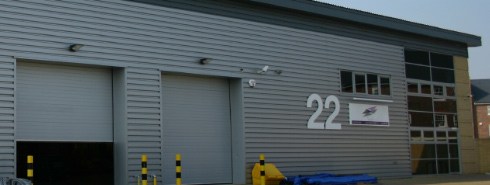
Any merchant, whether e-commerce, catalogue, or hybrid brink-and-mortar, will tell you that order fulfilment is vital to your customer experience,
and much more important to the all-important return business than front
end design, search engine optimisation or even advertising. The prompt
delivery of a customer’s order, as well as the accuracy, condition and
appearance of the order, is what customers will remember about an
internet purchase, long after they’ve forgotten everything else. The quality of order fulfilment is therefore more important to the development of your brand than almost anything else.
In the same way, your pick and pack operations are the beating heart
of your fulfilment processes. If you aren’t quite ready to turn your pick and pack or order fulfilment processes over to a specialist third party logistics partner,
consider these four strategies to make your pick and pack processes all
that they can be, improving the accuracy, efficiency, and speed of your
entire order fulfilment operation.
Pick and Pack area organisation: fast, efficient, and safe
The shelves of your warehouse space should be organised to promote efficiency and accuracy in your picking process.If you use picking bins, make sure they are easy to access and move about the warehouse. Much time and energy can be wasted just getting the bin to the storage location of a needed SKU. Remember that anything that looks difficult or awkward presents a risk of injury, and the cost and loss of efficiency injury brings.
Make sure your pickers can see into the bins easily. Even if you have an automated process and everything is scanned, a visual check can catch a lot of potential errors.
Make sure your bins are sized in proportion to the orders they will hold. This can be made part of a semi-automated process if you have the size and weight of each SKU programmed onto your warehouse management system.
Lastly, organise your product storage so that pickers don’t have to sort through many similar products to find the desired SKU. This saves time and reduces the error rate substantially.
Item location: Placement and layout is the cornerstone of warehouse management
The layout of your warehouse is critical to every one of its functions, and can make or break your order fulfilment process. Divide your floor into different picking areas, in terms of the distance between item locations and the packing area.Make sure that two classes of items are closest to the packing stations: fast moving items and top sellers. You already know what a top selling item or SKU is. It is important that the items you sell most often are near to the packing station in order to cut down on unnecessary movement through the warehouse. This reduces pick time, but there is more to it than that. The less tome goods are in movement, the less vulnerable your employees are to injury, the less the goods are susceptible to accident, and the less your equipment is exposed to wear and tear. Everything costs a little less when the warehouse is set up efficiently.
Fast moving items are those products or SKUs that have the highest turnover rate. They may be your top sellers, but they may not. If one product is ordered in small quantities, perhaps due to bulk, limited shelf-life, or high unit cost, it might be moved into and out of stock more rapidly than higher-selling items. Especially of the issue is bulk or unit cost, the accident protection savings of a short trip to the packing area make treating it just like a high seller more efficient.
Use standardised packaging to keep everything moving quickly
Your packers should spend their time making sure everything is just right for the customer, not deciding how best to wrap a product. If they have to constantly make unguided decisions about what size of box to use, whether item 123-456A needs bubble wrap, paper, or just a jiffy bag, and then how much tape to use, you’re wasting time and money. You are also risking unacceptable levels of damage in shipping.Ideally, you should have a very few standard size packaging options suited to your average order sizes and weights (or perhaps a bit above on both counts), and a few other options for unusual or awkwardly sized items. This will reduce decision making time and ensure more consistent shipping.
A good WMS can group common SKUs by ideal box choice, making it even faster. In addition, the use of standardised containers will often allow discounted shipping rates.
Pre-assemble common orders to same time when it is at a premium
Kitting, or pre-assembling orders of either individual products or specific groupings of SKUs, can make pick and pack operations much easier for all involved. Many warehouse managers choose to kit orders that are often made as a group (buy one get one free, included free samples, computer and monitor combos, etc.) in order to save time. Kits can be assembled at slow times or shifts, or by slower employees, reducing the pressure on the packing area during peak times.Alternatively, some SKUs are just harder to pack than others. Even if they are not ordered very frequently, the presence of even one on the pick and pack queue can slow all the orders behind it as the difficult piece is dealt with. Kitting these items beforehand can save a lot of time and effort, and ensure that these difficult items get the attention they need. No matter what policy is, if the packers are in a hurry, they won’t do the difficult SKUs justice. Make sure they don’t have to.
Kitting is particularly attractive to B2B sellers or anyone who commonly sells in bulk. If an order is for 213 widgets, it is much faster to pick two boxes of 100 each then pack the last thirteen than to pack all of them, after all.






